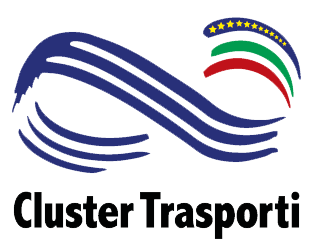National technological clusters, between collaboration and innovation
Published 15 July 2020
The twelve national technological clusters have been presented during the public event: “The national technology clusters. The structural collaboration platform”, held at the Confindustria headquarters. Present at the event were the Director General Marcella Panucci, the Deputy Minister, Ministry of Education, University and Research, Lorenzo Fioramonti and the Undersecretary of State, Ministry of Economic Development, Andrea Cioffi. “Research – underlines Fioramonti – must be placed at the center of the country’s public discourse, because a country that invests in research has a long-term vision and believes in its future, it is a country of great attraction for foreign investors”.
“In Italy – adds Cioffi – there is a great potential that must be put into a system to ensure that research becomes production, recognized in a meritocratic system in which public and private are parallel and not overlapping”.
During the works it was then emphasized that it is necessary to create a system by focusing on collaboration between public and private sectors to relaunch the country’s competitiveness, also using public demand as a lever for innovation. To encourage this project, today there is also the new collaboration between the Ministry of Education, University and Research (MIUR) and the Ministry of foreign affairs (MISE), of which the clusters are a direct expression. The clusters – explain the representatives of the twelve clusters – are the fundamental hub for linking national and European policies with the regional ones, transferring the know-how achieved and consolidated in research environments to companies to make innovation and production.
They represent the only table that can bring together public and private, medium and small businesses together with large companies by photographing the state of the art of the various sectors at national level, defining a common road map that goes from the identification of critical issues to proposals concrete development.
Italy – finally underlines Andrea Bianchi of Confindustria – is also the only European country in which the cluster network has a national character and is so extensive. It is therefore necessary to bring national experience to Europe as a best practice, demonstrating the importance of collaboration to do research in a community logic, in which competition is directed externally towards competitors in the West and East and not an internal logic. The Secretary General of the Cluster on Sustainable Mobility, Lucio Sabbadini, intervenes during the works. The Cluster has been legally recognized since September 2014 and has published its “strategic agenda” since 2015; then in support of the various national and European round tables on the theme of transport, it provided road maps and technological trajectories on sustainable land and sea mobility. On the sidelines of the speech, Sabbadini said he was “very satisfied with the decree of recognition of the new clusters” hoping that “there could be room for improvement on the funding mechanisms identified, to ensure the important role they play on a national scale”.
The day of work continues with a round table on the experience of the clusters of investee companies. Speakers Roberto Calandrini, data scientists & architecture, Snam; Ernesto Ciorra, director of the innovability function of the Enel Group; Luca Manuelli, Chief Digital Officer, Ansaldo Energia; Giampaolo Franchi, head of technological innovation, Poste Italiane; Andrea Nativi, head of market analysis and EU / NATO Policies within the chief strategy & innovation officer, Leonardo and Piero Rosina, head of digital innovation and energy solutions, Terna Group. The reports once again reaffirmed the importance of collaboration between the public and private sectors. Ciorra emphasizes the concept of transversal collaboration within the company – and therefore of the clusters – stating that innovation can take place both from the bottom up and vice versa because the hierarchies should not be important but it is essential to enhance good ideas to foster the innovation process.
Nativi recalls how the role of “national clusters is to consolidate national strategies in a community vision. Transactional collaboration is necessary – he continues – to make the European Community a giant of innovation and research, which can then be translated into production and wealth. Clusters – finally reiterate the participants – are an essential tool for dialogue between research, development and innovation that must be supported with reasoned strategies and governance. Inclusive hubs that can be the standard bearers of Made in Italy excellence. The day ends with a speech by Deputy Minister Fioramonti who undertakes to bring research to the center of public discourse by proposing a collaborative governance between public and private that promotes an open vision that aims to enhance the future of the country.
The clusters recognized and presented during the event are:
- Cluster Aerospazio
- Cluster Agrifood
- Cluster Alisei
- Cluster Ambienti di Vita
- Cluster Blue Growth
- Cluster Cultural Heritage
- Cluster Energia
- Cluster Fabbrica Intelligente
- Cluster Made in Italy
- Cluster Mobilità Sostenibile
- Cluster Smart Cities & Communities
- Cluster Spring


